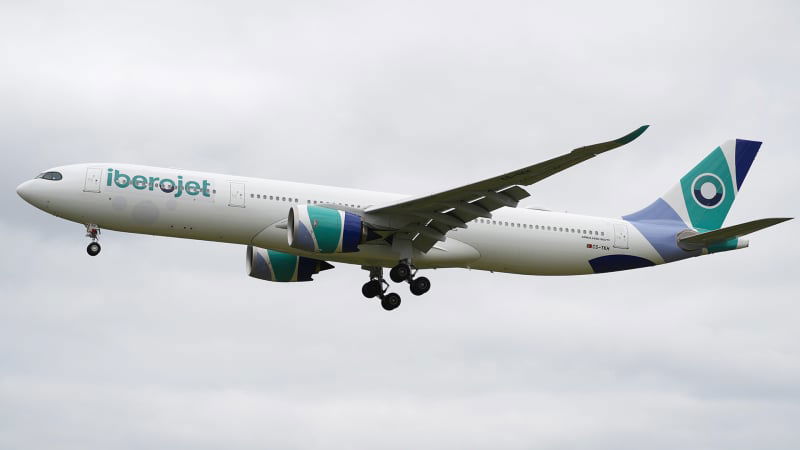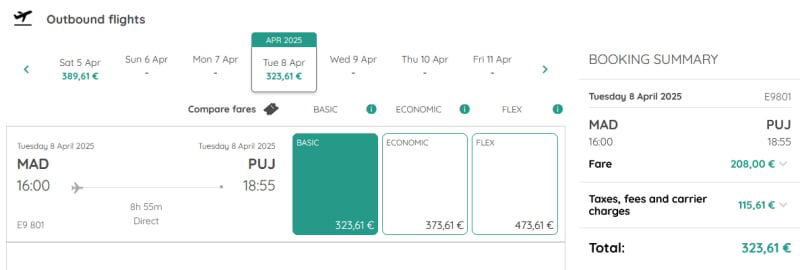Almost 9 Hours: Will This Be The Longest Commercial 737 MAX 8 Flight Ever?

Featured image: MarcelX42/Wikimedia | CC BY-SA 4.0 International
Spanish-Portuguese leisure charter carrier Iberojet operates two weekly flights between Madrid (MAD), Spain and Punta Cana (PUJ) in the Dominican Republic.
Usually, these flights are operated with their fleet of Airbus A330-300s, with occasional A330-900 substitutions. The flight from Madrid has an average air time of just over 8 hours and 40 minutes, while the flight leaving Punta Cana returns in 7 hours and 15 minutes thanks to the tailwinds.
However, due to speculated lower demand, Iberojet will swap out their A330 heavies for a Boeing 737 MAX 8 on two days in April 2025. On April 8 and 22, Iberojet will push the limits of the MAX 8, operating the following schedule as first noted on filings website Official Airline Guide (OAG):
- Flight E9801: Departing Madrid (MAD) at 4:00 p.m. and arriving in Punta Cana (PUJ) at 6:55 p.m. local time (8 hours and 55 minutes block time).
- Flight E9802: Departing Punta Cana (PUJ) at 9:25 p.m. and arriving in Madrid (MAD) at 11:45 a.m. the following day (8 hours and 20 minutes block time).

While the flight from Punta Cana to Madrid isn’t a problem, the flight to the Caribbean will definitely test the limits of the aircraft. For starters, the great circle distance between Madrid’s Adolfo Suárez Madrid–Barajas Airport and Punta Cana International Airport is 4,087 miles (3,552 nautical miles).
The great circle distance is the shortest path between two points on the globe, but in reality, flight plans are not perfectly straight mainly due to factors such as ATC and company routing, and airspace restrictions, as well as weather conditions.
In this case, they will be flying into the wind, which will increase fuel burn. That’s quite a run as Boeing says the MAX 8 has a theoretical range of 4,028 miles (3,500 nautical miles).
Even though a standard MAX 8 can seat up to 189 passengers in an all-economy configuration, Iberojet is limiting seating capacity to 123 passengers each way, significantly reducing the potential zero fuel weight (total weight of the airplane and all its contents, minus the total weight of the usable fuel on board) and required fuel for those flights.
Unfortunately Iberojet has not responded to my questions about the equipment swap, so I have not been able to find details about who will operate this flight on their behalf, as Iberojet is strictly an Airbus operator.
In the past, some carriers have pushed the MAX 8 to operate flights with block times just over 8 1/2 hours long, even though those numbers have since gone down to 8 hours. It will be really interesting to see the real-world telemetry from these two flights once they are completed.



